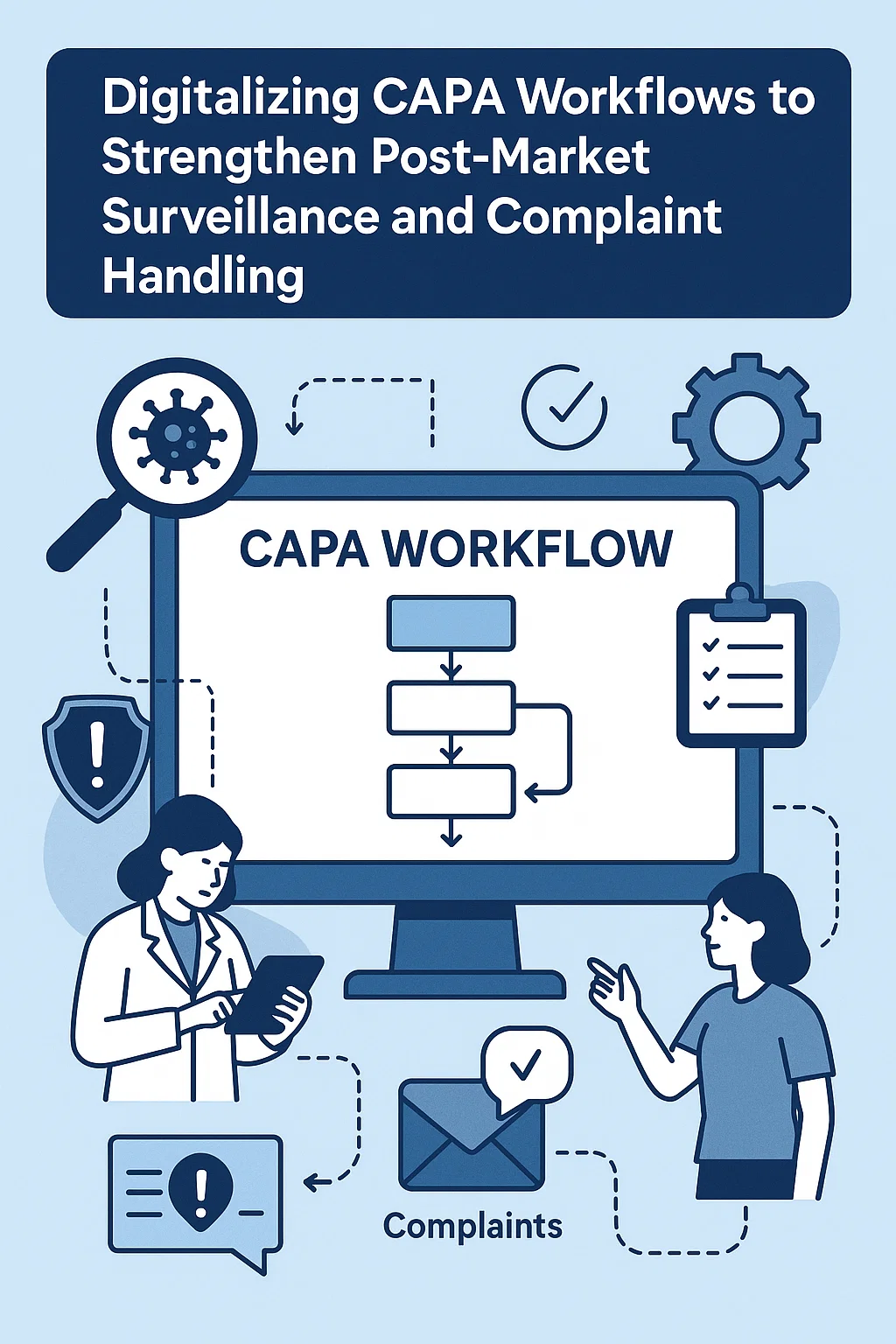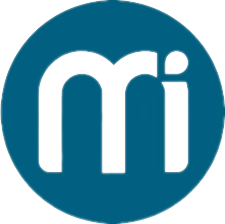Digitalizing CAPA Workflows to Strengthen Post-Market Surveillance and Complaint Handling

The Rising Urgency of CAPA Transformation in the Medical Device Sector
The medical device industry operates under constant regulatory scrutiny, where safety, efficacy, and compliance are non-negotiable. As post-market surveillance intensifies across regions like the US, Europe, and Asia-Pacific, manufacturers are compelled to address quality challenges with agility and precision. Issues uncovered through customer complaints, nonconformances, or adverse event reporting must feed directly into a corrective and preventive action cycle. This is why many leaders are turning to CAPA Software for Medical Device Industry adoption—it provides the structure, speed, and transparency necessary to manage these processes at scale.
Linking Complaint Handling with Post-Market Surveillance
Complaint management is not just a regulatory requirement but a critical opportunity for organizations to identify systemic risks. When integrated with digitalized CAPA workflows, complaint handling becomes a proactive driver of continuous improvement. Instead of viewing complaints as isolated cases, manufacturers can track them across product families, geographies, and suppliers, enabling deeper insights and stronger risk mitigation strategies.
Digital Workflows as a Foundation for Effective CAPA
The traditional manual approach to CAPA management is fraught with inefficiencies. Paper-based tracking, siloed teams, and disparate data sources often lead to delayed responses and incomplete resolutions. By contrast, digital workflows align seamlessly with a quality management system, providing a single source of truth for all CAPA-related data.
Enabling Root Cause Analysis with Data Integration
CAPA requires a disciplined approach to root cause analysis. Digital platforms connect post-market surveillance data, supplier quality information, and product lifecycle data in one ecosystem. This enables cross-functional teams to identify systemic issues faster and design corrective and preventive actions that are not merely reactive, but sustainable in the long term.
Real-Time Visibility for Quality Leaders
For QA/RA executives and quality assurance managers, visibility into open CAPAs, pending investigations, and recurring issues is vital. Capa software for medical device industry environments enables dashboards and reports that provide executives with real-time insights, helping them prioritize actions and allocate resources effectively.
Strengthening Regulatory Compliance with CAPA Automation
The global regulatory landscape is evolving rapidly. Authorities such as the FDA, EMA, and Health Canada are intensifying post-market oversight while also encouraging a risk-based approach to quality management. Automated CAPA workflows help organizations stay audit-ready by ensuring every step is documented, traceable, and compliant with requirements such as ISO 13485 and FDA 21 CFR Part 820.
Audit Trails and Electronic Signatures
Modern platforms ensure every action within a CAPA process is captured in an auditable trail. This provides regulators with confidence in the company’s ability to systematically address issues. Built-in electronic signatures add another layer of accountability, aligning with international requirements for electronic records.
Integration with Broader Quality Management Frameworks
Digital CAPA is not an isolated module—it connects with document control, training, and risk management to build an end-to-end ecosystem. This ensures that corrective and preventive actions drive process changes across the organization rather than staying confined to a single incident.
Connecting CAPA to Complaint Handling for Faster Resolutions
A company’s reputation in the life sciences market depends heavily on how effectively it responds to customer complaints. The integration of complaint handling with capa ensures that every issue raised by customers feeds into systemic quality management improvements.
Closing the Loop on Feedback
Post-market data captured from healthcare providers, distributors, or patients must translate into tangible improvements. Digital CAPA workflows ensure that feedback loops are closed by tracking not only the resolution of individual complaints but also whether corrective actions have prevented recurrence across the product line.
Enhancing Patient Safety and Customer Trust
By linking CAPA to complaint management, companies demonstrate a commitment to patient safety and customer satisfaction. This has tangible business benefits, including improved trust with regulators, reduced liability, and stronger competitive positioning in the global marketplace.
Leveraging CAPA Data for Continuous Quality Improvement
Quality management is not a one-time compliance exercise—it is a continuous cycle of monitoring, improving, and validating. CAPA data provides a goldmine of insights when captured and analyzed digitally.
Identifying Patterns in Nonconformances and Complaints
Data-driven CAPA systems allow organizations to spot recurring themes across product lines, geographies, or suppliers. This proactive approach ensures that preventive measures address root causes before they escalate into larger risks.
Building Predictive Quality Capabilities
Advanced analytics, when applied to CAPA workflows, can evolve into predictive models. Instead of waiting for complaints or failures to occur, companies can forecast potential risks and proactively implement preventive actions, further strengthening their quality management approach.
The Strategic Value of Capa Software for Medical Device Industry Stakeholders
For leaders in the medical device sector—CEOs, VPs of Quality, and Regulatory Affairs heads—digital CAPA is not just about compliance. It is about aligning quality with business strategy.
Faster Time-to-Market with Streamlined CAPA
When CAPA processes are efficient and automated, organizations spend less time on manual documentation and more on innovation. This accelerates time-to-market for new devices while still ensuring compliance with stringent regulatory requirements.
Enhancing Cross-Functional Collaboration
CAPA often involves multiple stakeholders across R&D, supply chain, regulatory, and customer-facing teams. Digital workflows improve collaboration by centralizing data, assigning responsibilities, and ensuring accountability across departments.
CAPA’s Role in Strengthening Global Market Access
As device manufacturers expand into new markets like Europe, Asia-Pacific, and Latin America, the need for robust quality management intensifies. Regulatory agencies in these regions place significant emphasis on post-market surveillance, making CAPA a critical enabler of global compliance.
Standardizing Quality Across Multiple Facilities
For organizations with distributed manufacturing and supply chains, digital CAPA ensures standardization. Regardless of where the issue arises—whether in Germany, the US, or Singapore—the CAPA process remains consistent, auditable, and compliant.
Building Confidence with Regulators and Customers
A robust digital CAPA system signals maturity to regulators and customers alike. It demonstrates that the organization not only complies with current regulations but is also capable of evolving its quality management practices in line with future expectations.
The Future of CAPA in an Era of Digital Quality Management
The future of quality management in the medical device sector is undeniably digital. CAPA workflows will increasingly integrate with AI-driven insights, connected devices, and broader product lifecycle management systems.
From Reactive to Preventive to Predictive
The evolution of CAPA mirrors the broader transformation of quality management—from reactive firefighting to preventive systems, and now toward predictive intelligence. Digital platforms are the foundation for this shift, empowering organizations to move beyond compliance and toward operational excellence.
Expanding CAPA Beyond Compliance into Business Value
When executed digitally, CAPA becomes more than a compliance tool. It becomes a driver of customer satisfaction, operational efficiency, and competitive differentiation. Organizations that recognize this shift are better positioned to thrive in highly regulated and competitive global markets.
Conclusion: Why ComplianceQuest is Essential for Business in 2025
The medical device industry is navigating a future where post-market surveillance, regulatory scrutiny, and customer expectations are intensifying. Relying on manual or siloed CAPA processes is no longer sustainable. Organizations require capa software for medical device industry transformation to ensure every complaint, nonconformance, and feedback loop is captured, analyzed, and resolved with speed and transparency.
ComplianceQuest provides an advanced, cloud-based solution that integrates CAPA seamlessly within a broader quality management framework. Its digital platform connects complaint handling, risk management, training, and document control, ensuring end-to-end traceability. For quality leaders, CEOs, and regulatory managers, ComplianceQuest delivers more than compliance—it delivers resilience, agility, and trust in an era of unprecedented change. In 2025 and beyond, companies that adopt ComplianceQuest will be best positioned to balance regulatory requirements with innovation, ensuring patient safety while driving global business growth.
- Art
- Causes
- Crafts
- Dance
- Drinks
- Film
- Fitness
- Food
- Games
- Gardening
- Health
- Home
- Literature
- Music
- Networking
- Other
- Party
- Religion
- Shopping
- Sports
- Theater
- Wellness


